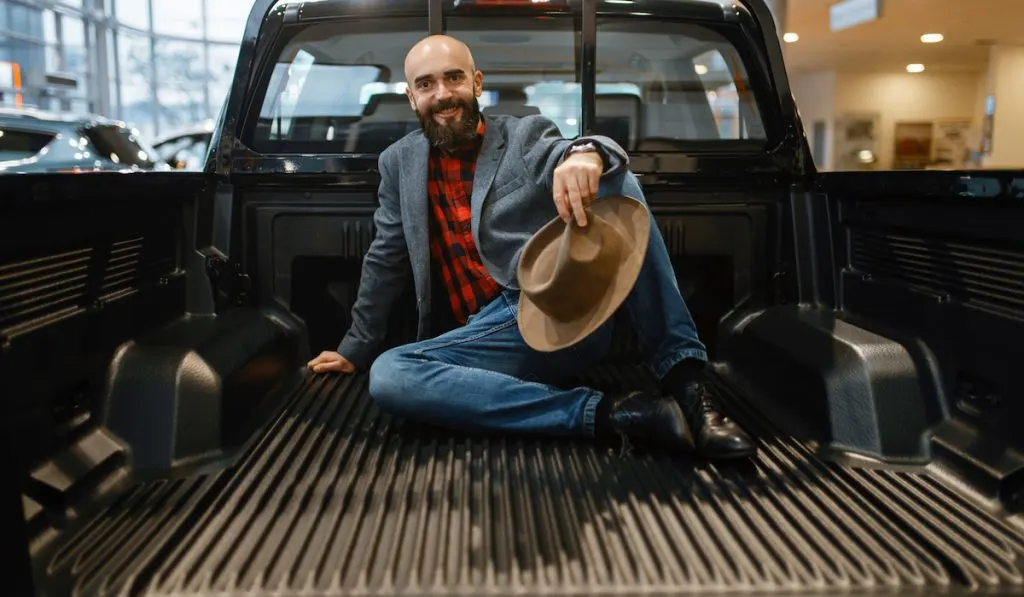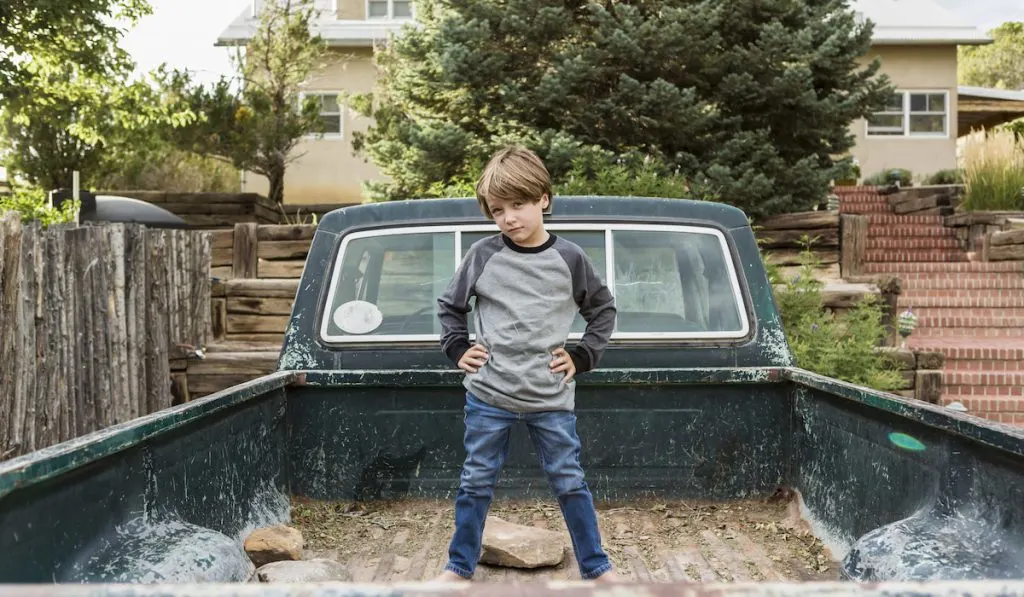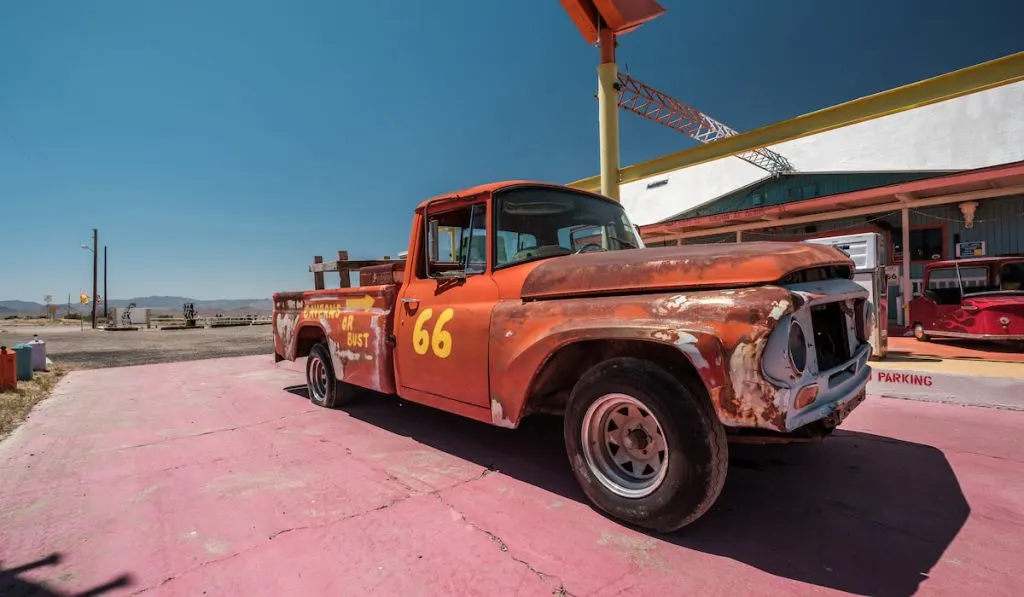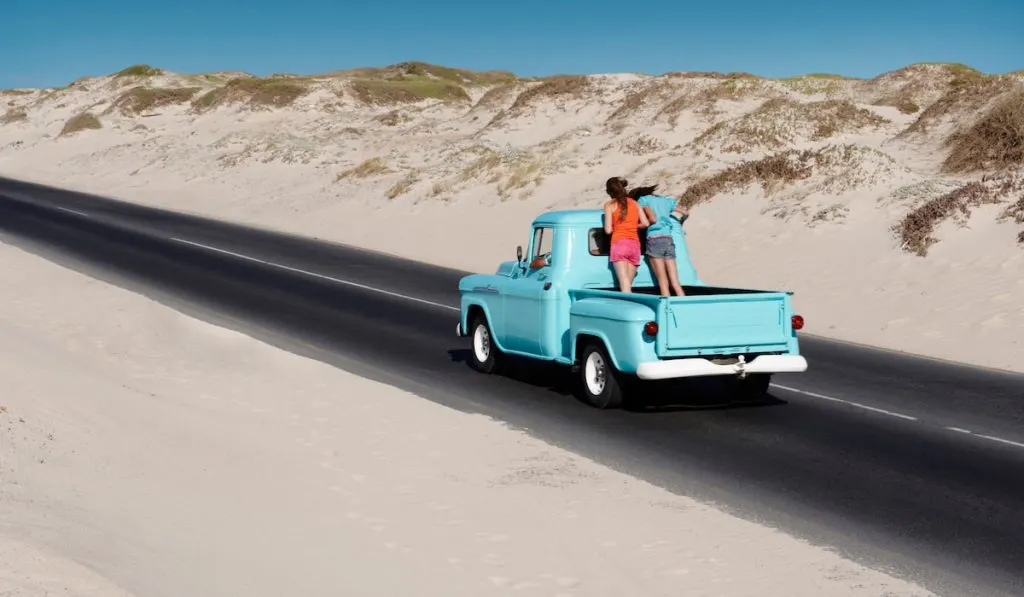There are several times throughout the week I find myself googling some innocuous question I can’t quite answer in my head. Why do bananas open easier from the bottom, are there tiny people inside my television, why do truck beds have ridges?
While the first two concerns continue to elude me, I can confidently answer the latter now for myself and anyone interested!
Believe it or not, these ridges serve several purposes. All fall under the category of transportation safety, keeping stuff dry, a smoother, less bumpy ride, etc.
If you ever wanted to impress a friend with your extensive knowledge of truck bed ridges and all the secrets that lie within their squared-off folds, then keep reading!

Purposes of Truck Bed Ridges
The cost and creativity it takes just to get a new vehicle out of the design stage are staggering, never mind the actual production process. The amount of thought that goes into keeping a truck structurally sound is admirable, and the results are both impressive and intentional.
The Durability of The Truck Bed
When I was in school we had a project in which we could only use two pieces of paper and with those pieces, we had to create as stable a bridge as we could manage. The teacher would place one-pound brick pieces on the paper bridge until it flattened completely. The most successful projects had a block or ridged pattern, as they would keep their form under much heavier pressure.
Well, the exceptionally bright folks that create truck beds used that same idea to keep your truck bed from warping or denting.
Those ridges keep it much more sturdy and heavy-duty when loading your bed down with hundreds of pounds of whatever you may keep in it.
A non-ridged bed runs the risk of becoming sunken in or damaged far more quickly.
To Keep Water from Sitting at Surface Level
Let’s say you are helping a friend move and you place a sizable amount of cardboard boxes in the back of your truck. On the way to the new house, it begins to rain heavy enough that the structural integrity of the boxes comes into question.
While the top of the boxes may be exposed to the elements (unless you have a cover) the bottom will likely be safe, due to the water falling into the crevices of your truck bed.
This also helps evacuate water from your truck bed as the slight downwards tilt of the front of your truck bed will push the water towards the small drain holes found between the front end wall and the truck cabin. The back of your truckbed can also relieve water from the bed of your truck as the tailgate is not sealed to keep in water.
If your truck didn’t have ridges, the water would likely pool quite a bit easier and if it didn’t have drain holes we would be doubling truck beds as makeshift jacuzzis.
Lessens Vibrations
This is something I never would have thought of, but thankfully I am not employed by any truck manufacturers. As you drive, your truck will begin to vibrate at a very low tempo, while this is hard to notice for us (usually) it can affect the structural integrity of a truck long term and also affect any cargo in transit.
This is also beneficial in making sure that the truck has a smoother ride, as the vibrations can provide some discomfort to both drivers and passengers if you are buzzing through an intersection. This also keeps nuts and bolts from coming undone over long periods of time, which helps provide a longer life to a truck without the need for your local mechanic.
How to Clean Out a Truck Bed
While we already know how effective the ridges of our truck can be for keeping it working properly and keeping transported inventory safe from inclement weather along with movement trauma, it does not make for easy cleaning.
Regardless, with a few households tools you can have your truck bed so clean you can serve dinner off it (we don’t recommend this).
Wipe Off Excess Dirt

Any household broom will do fine here. Simply start by making sure anything in the truck bed is removed, as this process needs to be thorough.
Then grab your handy dandy dust broom and get to work sweeping off any sediment, gunk, or compacted dirt you can find that may prove too difficult to be removed by a water hose.
Rinse Off the Surface of Your Truck Bed
Now the best tool to use here would be a pressure washer, but depending on how long it has been since you cleaned it you can probably get away with a hose and a strategically placed finger. Go ahead and pull down your tailgate so all the muddy water can easily escape out the back of your bed.
Starting from the cabin side of your bed, slowly spray back and forth moving slightly forward to the tailgate of your vehicle. Make sure to really give some attention to the hard-to-reach crevices and corners as water will get to this better than anything else.
Repeat the process a couple of times to not allow dirty water to remain inside your bed.
Scour the Bed with Soap
Break out your car washing soap of choice and get to work lathering up the interior of your bed. Make sure the soap you use does not have any harmful chemicals that may corrode or damage the surface of your truck bed.
A mop works well though if that isn’t quite hitting the mark you can switch it out for a scrub brush on the more stubborn spots.
Once that is finished you should give the bed one final rinse and let the surface air dry and give yourself a good, supportive pat on the back on a job well done.
Interesting Facts About Truck Beds
The First Pickup Truck

The very first truck with an attached bed was invented in 1896 just ten years after the very first vehicle ever made. It was created by Gottlieb Daimler, a German engineer who is also credited with the invention of the Grandfather Clock. It was marketed as a horseless carriage and boasted a now modest four-horsepower engine.
Truck Covers are Incredible Beneficial
It may feel subjective to say, but the multiuse purpose of a good truck cover can not be understated. While a truck may feel like it has an impressive amount of storage space, it can feel quite limiting when you are trying to store valuables in a place that isn’t easily accessible.
With a truck cover, you can comfortably store as much as you like in the bed of your truck without the risk of theft.
Equally as important is the improved gas mileage of a cover because of the reduction in air resistance. There are differing results on exactly how much gas you will save but it measures between 1.8 to 10 percent on average.
The most obvious reason is its ability to prevent rain damage on the items stored in the back of your truck. While the ridges protect the bottom layer of cargo, the rest of it is still exposed to the elements. With a cover, you can keep everything in the bed of your truck as dry as a summer day.
It will also keep your cargo from flying out of your vehicle if you haven’t strapped it down.

Pickup Trucks Account for 20% of All Vehicles
Despite the increasing cost of the average pickup truck (approximately $41,105) and the decline in sales of vehicles over the course of the pandemic, pickup trucks are still increasing in percentage across vehicles sold.
What was once used primarily for private transportation and farmwork is now being driven across all walks of life as a way to show an individual’s prominent social and economic status.
In April of 2020, pickup trucks outsold cars in the United States which is a trend that will likely continue as the years progress and the public obsession with pickups continues. This will also adversely affect the cost of trucks for consumers, which is expected to rise with the increased demand.
Conclusion
With the truck craze surging well into the roaring twenty-twenties, many established qualities we have come to see as set in stone will likely change over the coming years.
The electric vehicle market is very soon going to be incorporating vehicles from every major truck manufacturer in the world, with some new brands debuting their own electric alternatives.
What likely won’t change, however, is the reliably durable, quietly multifaceted ridges that we find indenting the surface of our truck beds.
